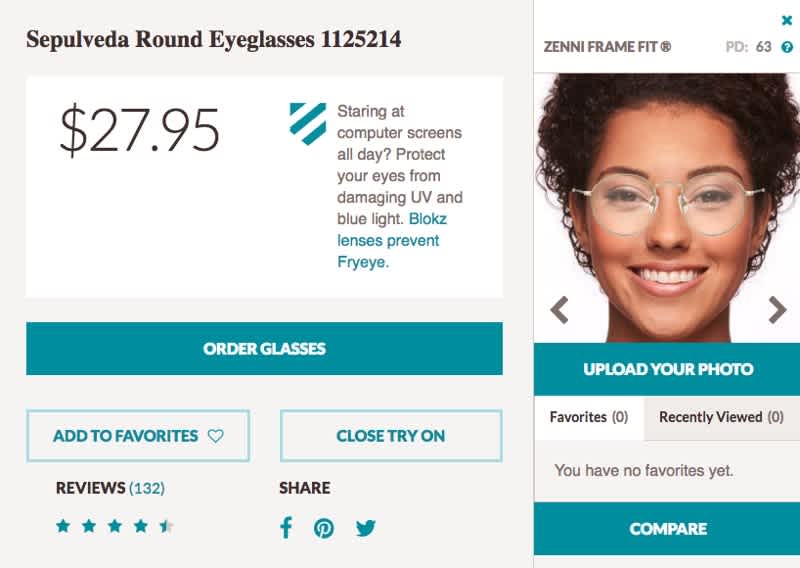Email Best Practices
5 ways retail brands can amp up their marketing in 2019
Retail marketing is in the midst of a renaissance. From influencers to AR, here are ways retail brands can amp up their marketing in this digital revolution.

PUBLISHED ON
The internet has been transforming the retail world by continuously coming up with new ways to shop.
From mobile apps, micro-moments, the Amazon phenomenon, to social shopping, and so on. The retail industry has gone through a lot of changes over the past two decades.
And it’s showing no signs of slowing down. In fact, here are some key facts and figures:
Walmart crossed the “500 billion dollars milestone” in revenue
Amazon announced it broke new sales records in 2018
In 2018, e-commerce now accounts for 11.5 % of total worldwide retail sales (KPMG, Online consumer Report, 2017)
72% of UK shoppers currently use Click and Collect - Cybertill & Forbes, 2016
Mobile devices accounted for 35.9% of the revenue generated online in the U.S. during the Black Friday Week
The market is evolving fast and retailers need to adapt to new trends and consumer preferences if they want to keep up with their competitors.
That being said, the amount of information shared online can be overwhelming - making it nearly impossible for marketers and PR professionals in the retail industry to:
Table of content
Why should retail brands work with micro-influencers?
Where can you find micro-influencers?
Website personalization
Email personalization
What is augmented reality?
Why is AR important?
Try out influencer marketing by working with micro-influencers
Influencer marketing has been all the rage in 2018. According to Forbes, it has proven to be the “most effective form of advertising.
But as influencer marketing becomes more popular, top influencers become less accessible and more expensive.
Enter micro-influencers.
What are micro-influencers?
Micro-influencers are “regular people with an average of 10,000 followers or less. They are the preferred choice for brands in niche markets, where influence often depends on quality rather than quantity”.
Why should retail brands work with micro-influencers?
Unlike most mega-influencers many brands work with today, micro-influencers’ fame comes from a very focused expertise. They know what they are talking about and this is why people like and trust them.
In 2019, consumers expect transparency and genuine content from brands. By working with dedicated and recognized experts, retail brands can strengthen their credibility and extend their audience reach.
Besides, unless you're representing a large, notable retail brand, micro-influencers are a lot more accessible than top tier ones, financially speaking.
At the end of the day, working with micro-influencers is a lot less risky since:
They’re a much smaller financial investment compared to macro-influencers, and
They would have less of an impact on your brand image if things go wrong.
Where can you find micro-influencers?
You can find micro-influencers on platforms like Instagram or YouTube. They grow their communities by sharing giving their opinions on the latest industry trends and sharing valuable expertise.
To give an example, many gaming companies work with micro-influencers for them to review their games and present them to their communities. Here’s an example of it with the latest Smash Bros. on the Nintendo Switch:
When done right, influencer marketing can help brands see a 7x increase in their ROI (Influencer Marketing Hub). And it would potentially be at a fraction of the cost they’d be spending on other forms of marketing.
However, to get good results, retail companies need to make sure to only work with influencers that match their brand image and values.
Personalize the customer journey
According to Janrain, 75% of consumers demand a personalized experience when interacting online with brands.
It is therefore very important for retailers to take this into account. Fortunately, most brands are well aware of it as Gartner reveals that “90% of brands say they will practice at least one form of marketing personalization by 2020.”
With that said, there are two types of personalization retailers should take into account:
Website personalization
Personalize your visitors’ and customers’ experience depending on who they are, what they want and what they do in real-time. As an example, this is a type of personalization Amazon masters.
I recently researched video games related items on Amazon.com, and the website auto-suggested me to give it another thought:
Each visitor will go through a completely different experience depending on their previous interactions with the brand.

Amazon recommendations
Email personalization
If your customer didn’t purchase right away, the emails you follow up with will be a very important part of nurturing them. The personalization of each email you send to your customers should depend on their on-site behavior (categories and product pages visited, Items added to the cart, etc.).
In 2019, retailers can use email personalization to push dedicated offers or send discount coupons based on each visitor’s interests, location, or behavior (i.e. send a discount coupon on various gardening tools to someone who bought gardening tools in the last 6 months).
When thinking about segmentation, or how to divide your potential customers in order to personalize your emails to them, here are a couple of ideas:
Existing customer vs. new visitors
While the average conversion rate for a new visitor is around 3%, a returning customer has a 60% chance to buy again. What’s more, they spend on average 67% more than new visitors.
This means most of your existing customers will buy whether you’re pushing discounts, or not. By only sending discount coupons to new customers and not your entire database, you could be saving yourself a pretty penny.
By focusing your personalization efforts on new visitors, you could quickly see bumps in revenue.
Customer preferences
You could actually call this a personal customization.
Customization requires an action from the visitor. Customers could tell you what they would like their experience to look like and you build it according to their preferences, or you could customize the experience based on attributes like city or gender. All this can be done using Email Segmentation tools.
Here’s an example from Hubspot.
Hubspot subscription
When subscribing to their newsletter, you get to decide what kind of content you would like to receive in the future.
Here’s another example from Peel, a phone case retailer.
When logged in, visitors can add items to their cart and leave before buying, Peel will automatically send them a reminder email called an abandoned cart email.

Peel abandoned cart
Our tip here is to combine these two types of email optimization. 1) Your customers will receive relevant content, and 2) You’ll offer them a shopping experience that’s personalized in real-time depending on their online behavior.
Geolocalization
Retail brands often deal with customers in different locations and languages. To better communicate with them, there are multiple factors they should take into account:
Time zones: Sending an email in the morning to someone based in California means someone in Germany will receive it late in the afternoon.
Languages: this is quite obvious. Depending on who you are sending emails to, you may have to communicate in various languages.
Culture: depending on where your consumers live, they will have different interests, habits, or even ways to consume your content.
The following short story is a simple way to put it.

Go for a run and die (of exhaustion)
Now, in some regions of the world, you’d read this from right to left. The story’s outcome is then very, very different.
Go for a run.
Drink Coke.
… die.
In short, segment your audience based on key differentiating factors and send personalized emails to your audience to turn more visits into sales.
Leverage mobile and augmented-reality capabilities
In 2018, it’s estimated that 40% of people own a smartphone (and the percentage is obviously expected to grow in the coming years). As smartphone technology is continuously improved, this presents new opportunities for brands to differentiate themselves with new ways to engage with their customers.
By leveraging mobile and augmented reality (AR) features, retail brands can significantly transform the shopping experience they offer.
What is augmented reality?
Augmented reality, is the integration of digital content within the user’s environment (not to confuse with virtual reality (VR), which create a new environment for the user).
Why is AR important?
AR can simulate a real shopping experience wherever your potential clients are. Even better, it simulates a real shopping experience within an environment that is familiar to the shopper.
Here are some examples of AR many retailers are already using to convert more visitors into clients:
Optical retailers: if you wear glasses, you know for a fact that choosing the pair you’ll be wearing everyday for the next couple of years is no easy job.
Today, many retailers offer the possibility to try different models at home, using AR capabilities. It’s not perfect yet, but it will give you a great idea of what specific frames would look like on you.
Here’s an example with Zenni Optical.

Zenni Optical
Furniture: buying furniture is always exciting. That being said, it’s very hard to visualize the result before you buy.
To help their customers to visualize their potential purchases a bit better, Ikea and Apple worked together to create Ikea Place, an AR app that helps you visualize how various pieces of furniture would look in your home or office space.

Ikea Place
AR is no longer unaffordable
A couple of years ago, developing an AR app involved putting over $30K on the table. Today, it’s estimated that $5K should be enough to develop a functional AR mobile application.
What’s stopping you from trying it out?
Monitor what is being said online
There is a lot being said online about retail brands. From product feedback to customer service complaints, knowing who is talking to your brand and why in real-time is essential.
But first, let’s take a step back.
A large part of marketers’ and PR professionals’ role in the retail industry is to control their brand’s online reputation.
That said, the constant noise generated by the millions of conversations happening every day makes it impossible for them to focus their time on what really matters.

Media monitoring
Using media monitoring, marketing and PR professionals can keep an eye on everything relevant that is said about them, their competitors and their market in real-time.
What’s more, they are able to identify trends before they go mainstream, giving them two significant advantages.
Identify potential threats to your business: while it takes a lot of time to build one’s reputation, it only takes seconds to destroy it. An advanced monitoring tool will help marketers to identify all types of online threats heading their way, whether their brand is in @mention, or not.
Here’s an example with the negative trends gravitating around the Amazon brand: there are 30K mentions about Alexa, 8K about employees. It’s probably something Amazon’s social media team would want to be aware of.

Media monitoring
Identify business opportunities before your competitors: Trends are, by definition, temporary. As soon as the internet picks a trend up, the window to get on the trend train is very, very short. Monitoring-savvy retail brands can identify these trends before they go mainstream and change their product or marketing strategy on the fly.
Last but not least, we think you really need to focus on delivering an excellent customer service to succeed in 2019.
Offer excellent customer service, online and offline
Do you know why Amazon accounts for 33% of online retail conversations? They offer excellent customer service.
Amazon is laser-focused on their customers.
To give you a better idea, I took a look at the activity of their @AmazonHelp twitter account.
At the time of writing this blog post, @AmazonHelp tweeted 3.02M times in 9 years and 2 months.
This means they send an average of 903 tweets per day to deal with customer complaints, questions and remarks, in English, German, Spanish, Portuguese, French, Italian, Chinese and Turkish.
And that’s just Twitter. We’re not taking into account the call center and their website’s customer service platform.
If you want loyal customers in 2019, everything from your website, customer journey, and service needs to be seamless.
Be available when and where your customers need you
Today, customers demand service on their terms.
This means you have to be available when they need you, via the platforms they use.
While you obviously need a dedicated call center to ensure a proper customer service, you need to have round-the-clock presence on social media.
This focus on customer service is based on two key statistics revealed by KPMG International’s Global Online Consumer Report (2017):
51% of brands consumers trust the most make it easy to contact them.
66% of consumers say excellent customer service is a must for them to be loyal to a brand.
Your customers expect the best, or nothing.
It’s essential for retailers to understand in 2019, customers are no longer blindly loyal to brands. They are loyal to a level of customer service and customer experience.
In short, retailers’ ability to gain market shares depend almost entirely on their ability to keep their customers happy. And to do that well? Definitely consider the 5 tips we just shared with you.
What about you? What are your marketing New Year’s resolutions? Reach out to me at clement@mention.com to let me know!
***
This post was written by Clement Réné, content marketing manager at Mention.








